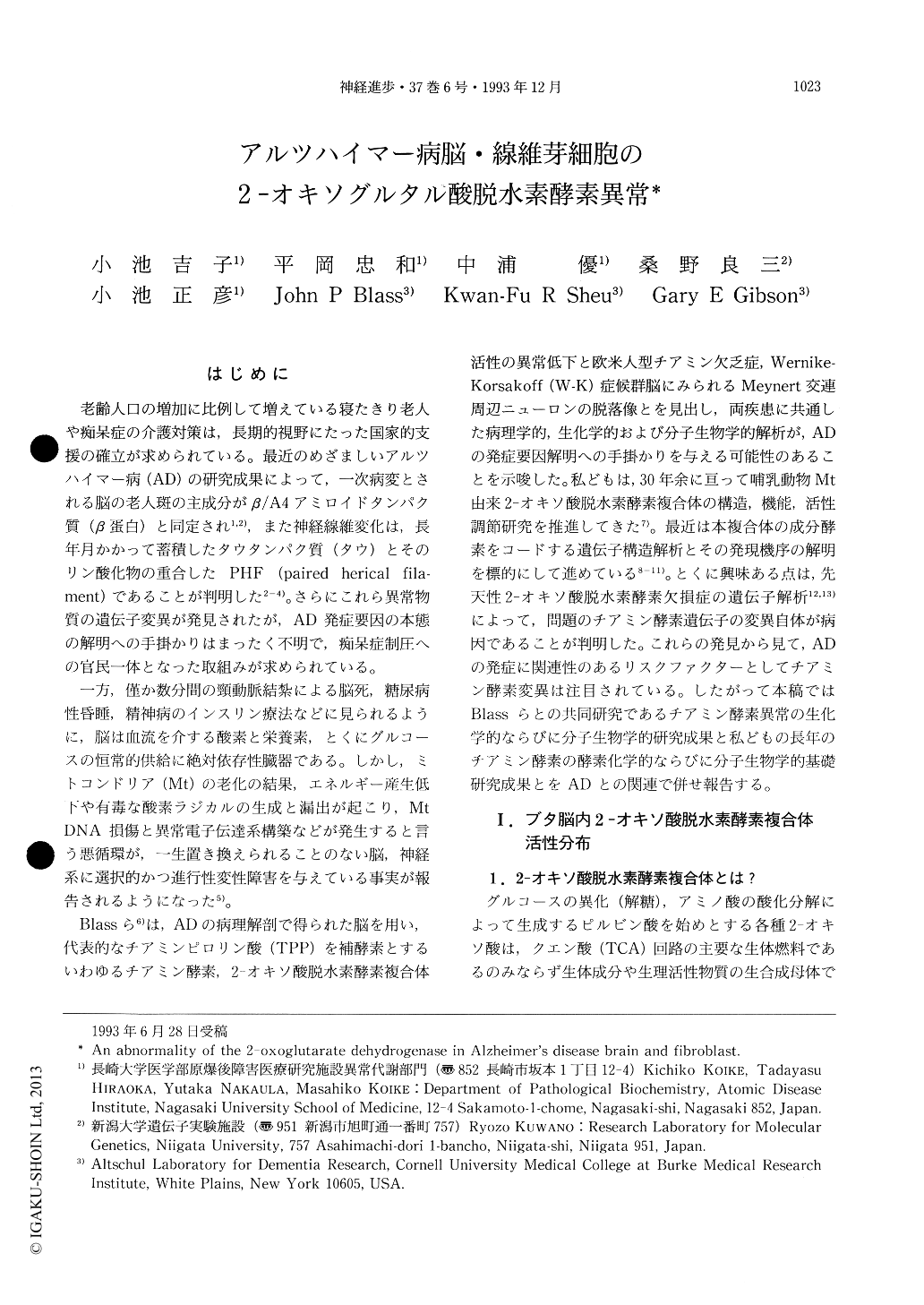Japanese
English
- 有料閲覧
- Abstract 文献概要
- 1ページ目 Look Inside
はじめに
老齢人口の増加に比例して増えている寝たきり老人や痴呆症の介護対策は,長期的視野にたった国家的支援の確立が求められている。最近のめざましいアルツハイマー病(AD)の研究成果によって,一次病変とされる脳の老人斑の主成分がβ/A4アミロイドタンパク質(β蛋白)と同定され1,2),また神経線維変化は,長年月かかって蓄積したタウタンパク質(タウ)とそのリン酸化物の重合したPHF(paired herical filament)であることが判明した2-4)。さらにこれら異常物質の遺伝子変異が発見されたが,AD発症要因の本態の解明への手掛かりはまったく不明で,痴呆症制圧への官民一体となった取組みが求められている。
一方,僅か数分間の頸動脈結紮による脳死,糖尿病性昏睡,精神病のインスリン療法などに見られるように,脳は血流を介する酸素と栄養素,とくにグルコースの恒常的供給に絶対依存性臓器である。しかし,ミトコンドリア(Mt)の老化の結果,エネルギー産生低下や有毒な酸素ラジカルの生成と漏出が起こり,MtDNA損傷と異常電子伝達系構築などが発生すると言う悪循環が,一生置き換えられることのない脳,神経系に選択的かつ進行性変性障害を与えている事実が報告されるようになった5)。
Preliminary studies of the isolation of porcine brain mitochondria and synaptic vesicles and their thiamin pyrophosphate (TPP)-dependent enzyme (TPP enzyme) activities suggest the wide distribution of the pyruvate and 2-oxoglutarate dehydrogenase (PDH and OGDH) complexes in brain mitochondria. These complexes appear to be relatively concentrated in the cholinergic synaptic ending.
Because of clinical and neuropathological overlap between the characteristics of dementia of Alzheimer's disease (AD) and of Wernicke-Korsakoff syndrome caused with thiamin deficiency the TPP enzymes have been studied in AD brain, its skin fibroblast and platelets. The activities of mitochondrial PDH and OGDH complexes and cytosolic transketolase (TK) are dramatically reduced in AD brain. The most marked reduction is in the OGDH complex to less than 20% of the control. In cultured skin fibroblast from familial AD the OGDH complex activity is reduced 44% of the control. We have cloned and sequenced of the human cDNA encoding OGDH, which is one of three component enzymes of the OGDH complex. RNA blot analysis was failed because of too low concentration of the OGDH mRNA in AD and non-AD fibroblasts. Therefore the mRNA is immediately reverse-transcripted to cDNA by the reverse transcriptase and amplified specific 638 base pair (bp)-segment (nt. 76-713 of OGDHcDNA) with specific primers by PCR. PCR products are electrophoresed, transfered onto membrane, and detected with radiolabeled cDNA probe. Level of the OGDH-mRNA in AD fibroblast was consistently reduced, suggesting abnormality of the OGDH gene or its primary structure. The present results indicate that mitochondrial abnormalities in AD are not likely to be a consequence of the disease process, but are an intrinsic part of it.

Copyright © 1993, Igaku-Shoin Ltd. All rights reserved.


